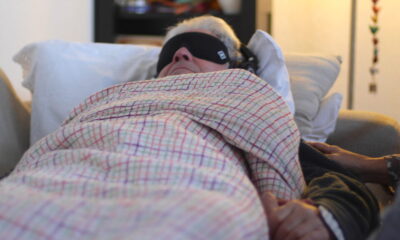Food
Mixed findings from 2022 German infection data

Germany reports a mixed picture for foodborne outbreaks and infections in 2022, with Salmonella and E. coli infections increasing and Campylobacter and Listeria cases decreasing.
The Robert Koch Institute (RKI) said the number of Campylobacter infections fell, while an increase in the number of cases of EHEC and salmonellosis was recorded.
In 2022, 373 potential foodborne outbreaks (excluding norovirus) involving 1,445 diseases were reported to the RKI. Data from the Annual report Epidemiology of infectious diseases shows that 154 of these were confirmed as food-related, and 913 people were affected. In 2021, 704 people became ill from 132 confirmed foodborne outbreaks.
In 2022, 70 outbreaks were caused by Campylobacter, with 157 cases, and 67 by Salmonella, with 682 cases. E. coli caused three outbreaks, sickening 30 people, and Listeria was behind five, with 14 cases. Two deaths were caused by listeriosis and one by salmonellosis. Eighty people were sick in sixteen food-related norovirus outbreaks.
Campylobacter and E. coli
A total of 43,601 cases of Campylobacter were reported in 2022, a decrease compared to 2021. The majority fell ill from June to September, but a second peak was recorded at the beginning of this year.
As in previous years, the age-specific incidence was highest in toddlers and young adults. Two men aged between 70 and 90 died as a result of illness. Of the cases for which information was available, almost 90 percent were infected in Germany. Travel-related matters mainly went to Spain or Turkey.
1,822 cases of E. coli were reported, an increase from 2021. Of those with available information, more than 80 percent had been infected in Germany. Travel-related cases mainly concerned Turkey or Egypt.
Information about the serogroup was known for 226 infections. The top players were O157 and O26. As in previous years, the incidence in children under 5 years of age was several times higher than in the other age groups. German officials said the very low number of cases with serogroup information, just 12 percent and again a decline from the previous year, makes it difficult to track geographically diverse outbreaks that may be food-borne.
The number of cases of hemolytic uremic syndrome (HUS) rose from 54 to 72. Germany was mentioned 41 times as the likely country of infection, while four people named Egypt.
As in previous years, except in 2011, the incidence in children under 5 years was significantly higher than in other age groups. Twenty cases were reported in children aged 5 to 14 years, seven in adolescents aged 15 years and over and seven in adults.
Of 32 cases with serotype information, O26 and O157 were the most commonly involved. A 63-year-old woman and an 82-year-old man were killed. E. coli O183 was behind one of the fatal cases.
Four outbreaks were reported with 12 HUS cases and 19 E. coli infections. The largest included seven HUS and 18 E. coli cases. Several daycare centers in Bavaria were affected and were supplied with food by the same caterer. The pathogen was E. coli O111, but the source of infection was not found.
Salmonella and Listeria figures
9,141 cases of Salmonella were registered, compared to 8,203 in 2021. Three-quarters of the cases in 2022 were infected in Germany. Other frequently mentioned countries were Turkey and Egypt.
As in previous years, the highest age-specific incidences were in children under five years of age. The most frequently detected serovars were Salmonella Enteritidis, Salmonella Typhimurium (including the monophasic variant) and Salmonella Infantis.
13 deaths were related to salmonellosis. It involved a 32-year-old man and six men and six women between the ages of 63 and 91. Salmonella Enteritidis was responsible for three deaths, while Salmonella Typhimurium, Bovismorbificans, Infantis, Meleagridis, Muenchen, Newport and Senftenberg were all listed at some point. each.
In two major outbreaks, there were 46 diseases each. They were both caused by Salmonella Enteritidis and were linked to a restaurant and a nursing home. A Salmonella Chester outbreak involving 40 sick people involved a restaurant. Germany recorded 31 cases of the multi-country monophasic Salmonella Typhimurium outbreak caused by Ferrero chocolate products.
A total of 571 Listeria infections were reported, compared to 586 in 2021. In 2022, almost all cases were infected in Germany. The incidence of non-pregnancy-related listeriosis increased significantly with age. 36 deaths were reported with listeriosis reported as the cause of death.
In 2022, 1,809 Yersinia infections were recorded, compared to 1,935 in 2021. Of the cases for which information was available, more than 90 percent were infected in Germany.
The age-specific incidence showed the highest values in children, with a peak in 1- and 2-year-olds. Yersinia enterocolitica was the most frequently reported type, and serotype O:3 was the main type detected. One foodborne outbreak involving three sick people was linked to ground pork.
Only one case of botulism was reported, compared to six in 2021, while 35 Brucella infections were recorded, compared to 13 in 2021.
(To sign up for a free subscription to Food Safety News, click here.)







